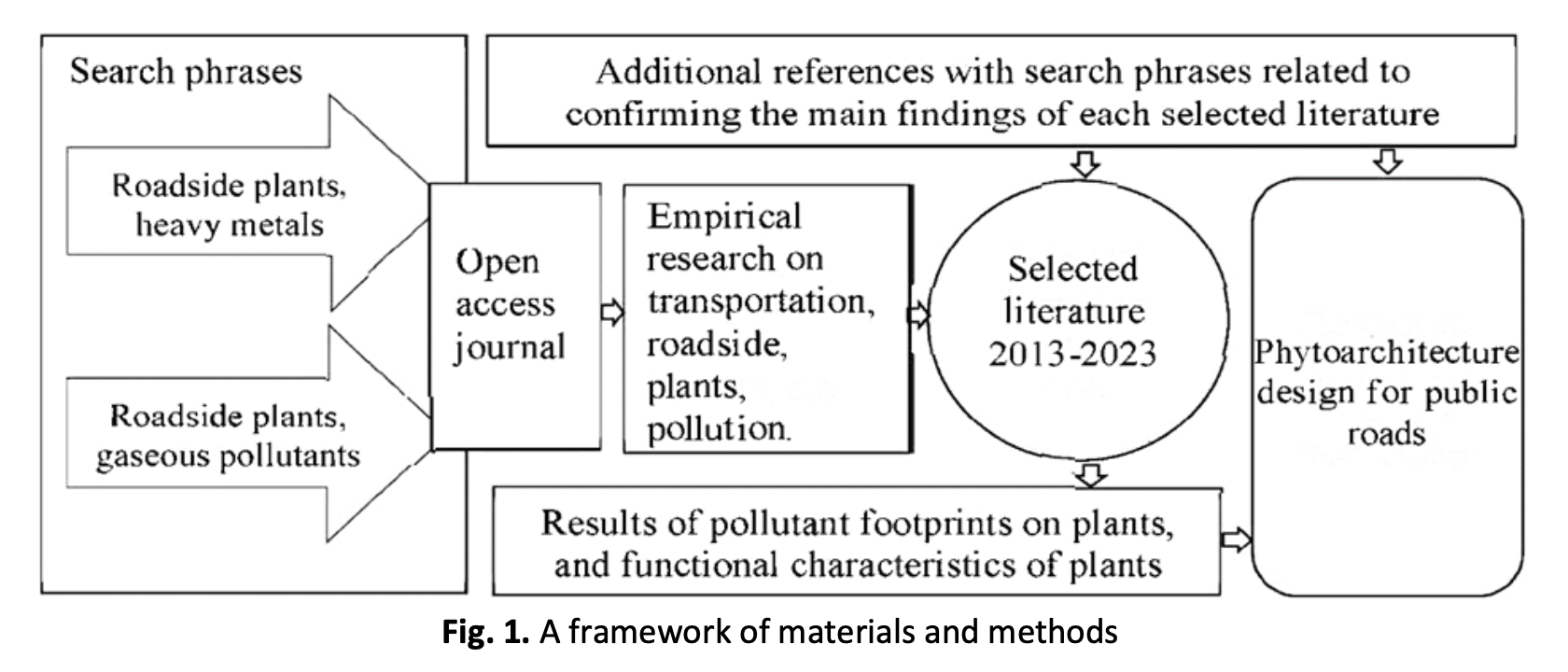Phytoarchitecture Design for Public Roads to Combat Air Pollution Resulting from Transport Operations
DOI:
https://doi.org/10.37934/araset.33.1.424440Keywords:
Environment, gases, infrastructure, metals, plants, soilAbstract
Public roads and all their activities interact with the environment outside. The interaction was related to transportation pollutants and their recipient bodies, plants, air, and soil. The interaction of these environmental components can produce air pollution and requires prevention solutions. Plants are considered capable of weakening pollution; thus, this study aims to design a novel phytoarchitecture for public roads where roadside plants reduce air pollutants. The method for achieving this goal was based on selected empirical research, which was searched, collected, and selected using the Mendeley reference manager platform with the search phrase: roadside plants, heavy metals, and gaseous pollutants. The selection of hundreds of literatures was carried out in three screening stages. The organisation of this literature review used the ecological approach of transportation pollutants and roadside plants. With the intended methodology, the results of this study indicate that gaseous pollutants and heavy metals arise from public road transportation activities. Traces of pollutants can be measured on the surrounding land and especially on plants. There are five functional characteristics of plants, including phytotreatment, which reduces air pollution; phytoaccumulation to store pollutants; phytoindicators to indicate the presence of excessive concentrations; phytotoxicity in response to toxic levels; and phytomonitoring, which can provide early warning system. Finally, an ecological design is proposed for new roads and improving, operating, and maintaining existing roadside plants. In conclusion, the plant roles can be applied as criteria in the architectural design of public roads.
Downloads





























